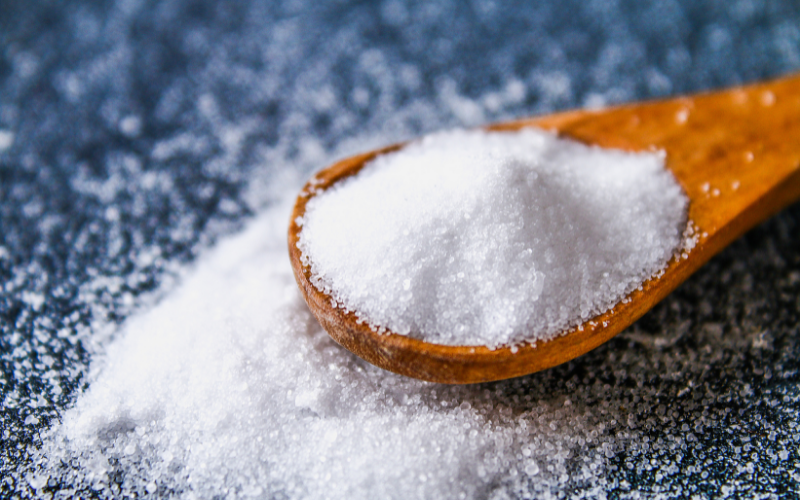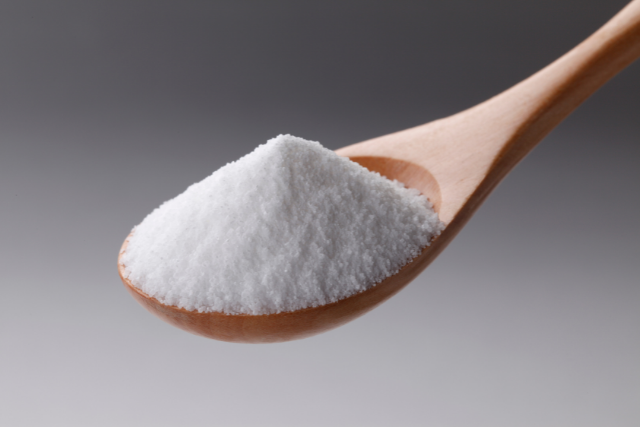Salt – How good is it for you?

A certain amount of salt is essential for the functioning of our body, but more often than not, we consume more salt than we need. Did you know that the average Indian consumes double the amount of salt recommended for the human body by the WHO?
This raises many questions. What is the ideal amount of salt you should consume? What are the health risks that come along with overconsuming or under-consuming salts? Why do we even need salt in our bodies? Fortunately, we have answers to all these questions.
What is Salt?


Chemically speaking, salt is a compound made of two minerals – sodium and chloride. This gives it its chemical name “Sodium Chloride”. It is a condiment used universally, which is why it is so unique in itself. Whatever part of the world you go to, common salt remains the same.
Most of the salt used by humans for consumption comes from seawater or mining. Seawater is high on salt and is evaporated to leave salt behind. Underground salt is harvested by drilling holes in and then crushing salt rocks. The compound has been historically used not just for its taste but also for its preservative qualities. Most processed foods are high on salt to keep them fresher for longer.
The role of salt in the human body
It is unusual for one to not get enough salt in their day-to-day life. An average diet tends to have well over the required amount of sodium one needs for survival. It is, therefore, possible that you have heard of people being asked to reduce their salt intake. The harms of salt are far more known and discussed than the roles of salt. But in reality, the consumption of salt performs crucial functions in our bodies.
Both sodium and chloride are ions that play an important part in several physiological processes. Keep in mind that the manufactured salt that ends up on your table is iodized. There also exist natural salts that contain minerals in addition to the traditional Sodium Chloride. With these facts out of the way, here are the primary functions of salt:
Regulates blood pressure
The main function of sodium surrounds blood pressure. Sodium attracts water to the bloodstream, which regulates blood circulation and enables the heart to pump blood throughout your body. Low amounts of salt in your body lead to low blood pressure; which can cause dizziness, nausea, weakness, and fainting. Salt is the chief source of sodium in our bodies. It does not produce sodium on its own.
Helps in hydration
The body needs a certain amount of salt to absorb water and stay hydrated. Water follows sodium throughout the body and when we retain water via sweat or urine, sodium gets released along with it. A good balance of hydration is possible when your body has a balance of potassium and sodium since the former reduces the ill effects of the latter.


Regulates thyroid
The thyroid plays a great role in regulating the metabolism of the human body. Both under-activity and hyperactivity of the thyroid lead to serious consequences. Most table salts are high in iodine, a mineral that is responsible for regulating the thyroid. Iodine deficiencies typically lead to the underproduction of thyroxine (the hormone secreted by the thyroid).
Balances electrolytes
Electrolytes (ions) are minerals that are essential for muscle functioning. An imbalance in electrolytes can lead to muscle cramping, irregular heartbeat, nausea, and fatigue. Sodium, the key ingredient in salt, itself is an electrolyte. Natural types of salt tend to be additionally high in other electrolytes like magnesium, calcium, and potassium. Their consumption provides a balance of these minerals. An imbalance in these can lead to life-threatening diseases. This is precisely why salt is essential for survival.
Helps in brain functioning
Apart from muscular and cardiovascular roles, electrolytes are involved in regulating neural activity. The nervous system works based on electrical impulses and messages which are only possible through ions like sodium. Additionally, sodium controls water flow in the body and supplies the brain with the hydration it needs. Therefore, it is essential for brain functioning.
Difference between “Sodium” and “Salt”
Often sodium and salt are used interchangeably in nutrition. However, they are not the same. Salt is a compound that has sodium and chloride. Typically, it has 40% sodium and 60% chloride. Natural salts or manufactured salts both have additional minerals in them, but the essence of salt is created by these two.
Sodium is what gives the common salt its universal taste. It is the chief mineral involved in both the functions and risks of consuming salt. If you find sodium in the ingredients of a food product, you can multiply the quantity by 2.5 to find the salt quantity. Sodium is usually consumed by the body in the form of salt, which is why its intake is monitored by how much salt one consumes.
Different types of salts
Salts, as mentioned before, are essentially made of sodium and chloride. However, other minerals either naturally occur or are added to them. There is a diverse range of salts out there, that you can differentiate based on where and how they were harvested. Here are a few well-known types of salts:
Table salt
Table salt refers to highly processed sodium chloride. Often known as “iodized salt,” it has very tiny grains and contains potassium, iodine as well as an anti-caking ingredient to keep it from clustering.
Sea salt
Sea salt is made from evaporated seawater and has a salty flavor that varies depending on where it’s obtained. These salts provide a modest quantity of iodine, but not nearly as much as iodized table salt. It is less refined than table salt and is available in fine and coarse versions. It is popular for its natural minerals.
Himalayan pink rock salt
This salt, which is easily identifiable due to its pink tint, contains all 84 natural minerals found in the human body. It is mined from the Himalayan Mountains. Because of its mineral quantity, pink salt can help with a variety of body functions, including minimizing muscle cramps, improving blood sugar levels, and maintaining a healthy pH level in your cells.
Celtic grey salt
Celtic grey sea salt, also known as Sel Gris in French, is harvested using ancient Celtic methods, from the Atlantic tidal ponds off the coast of France. The minerals that are left behind when seawater evaporates give it its grey tint. It is considered healthier because it is unrefined and unfiltered and contains unprocessed and naturally formed minerals.
Other types of salt include kosher salt, red Hawaiian salt, pickling salt, Himalayan black salt, Hawaiian black salt, smoked salt, and much more. All of these salts boast their own sets of mineral quantities and benefits.
Health risks of eating too much salt
The health risks of eating too much salt are practically impossible to ignore at this point. Usually, people are not even aware that they are consuming too much sodium because it tends to exist in pretty much everything you eat. One way to reduce the ill effects of this is to add more potassium to your diet. Nonetheless, here are the serious health risks that the consumption of too much salt can lead to:
Hypertension


Hypertension refers to high blood pressure (above 140/90). This condition refers to when the blood in one’s arteries flows with excessive force. Eating salt itself raises your blood pressure, but hypertension refers to a more static and long-term problem. Hypertension increases the risks of stroke, heart failure, osteoporosis, stomach cancer, and renal disease. Lowering the consumption of salt is the primary suggestion given to people to lower their blood pressure, apart from exercise.
Increases risk of stomach cancer
Several research studies have shown a link between stomach cancer and a high salt diet. While how this happens is unknown right now, many suggest that salt-rich diets may render a person more sensitive to stomach cancer by creating inflammation of the stomach lining. Additionally speaking of the digestive system, excess salt consumption is linked to kidney diseases and failure.
Fluid retention
A short-term effect of eating too much salt is that you could feel more bloated. Our kidneys are designed to maintain particular sodium to water ratio in the body. When too much sodium is in your system, your body holds more water to balance it. You may even start feeling intensely thirsty after having a heavily salty meal because your body is trying to maintain healthy sodium to water ratio. This whole process can cause swelling in the hands and feet, and lead you to weigh more than usual.
Increases risk of heart diseases
In the long term, holding too much fluid in the body is one of the causes of high blood pressure. It widens your blood vessels and puts extra pressure on the heart, which means you are at an increased risk of having a heart attack. Fascinatingly, some suggest that if the entire world started to reduce their overconsumption of sodium, the number of people with heart diseases would decrease by half!
Might lead to premature death
Because of the above health risks that eating too much salt poses, many link a lifestyle with an excess sodium diet to premature death. This is because hypertension leads to the stiffening of the arteries and blood vessels, posing several cardiovascular risks. However, this claim is disputed and controversial. Studies have found contradicting results where some find that salt prevents heart diseases while others find that salt decrease longevity.
Health risks of eating too little salt
Government-backed efforts have been pushing people to reduce their salt usage in recent years. Yet, some research suggests that consuming too little salt may increase the risk of heart disease. While this is a debate for another platform, it is indisputable that some sodium is essential for survival. Therefore, too little amount of salt in the body has health risks.
Here are a few health risks of eating too little salt: –
- Low blood pressure is the chief risk of eating too little salt. It can lead to muscle twitches, followed by seizures, loss of consciousness, coma, or death. The person may feel fatigued and lethargic.
- Since sodium affects electrolyte balance in the body, the activity of the brain is affected when sodium levels in the blood drop. Symptoms in older adults can be severe.
- According to a study, when rats were deficient in sodium, they avoided behaviors that they ordinarily loved. This leads to the conclusion that low levels of salt can worsen or cause symptoms of depression.


- Addison’s disease and barter syndrome are two medical conditions that are associated with insufficient sodium in the body.
How much salt should you be consuming?
No matter what type of salt you choose to consume, it must be consumed in moderation. All salt may have their sets of pros but the cons of too much sodium remain.
According to the WHO recommendation, adults should take less than 5 g (slightly under a teaspoon) of salt per day. However, the mean salt intake reported tends to be as high as 9 to 12 grams. All WHO member states have agreed to a 30 percent reduction in salt intake in their populations until 2025. They have estimated that proper salt consumption might avoid 2.5 million deaths.
Yet, many other research studies suggest otherwise. There exist a lot of individual differences in these conclusions because one might get accustomed to a certain level of sodium. Usually, what your doctor tells you about your salt intake is what you should strictly adhere to. It would, however, be a good idea to avoid processed foods in general. But not only because they are high in sodium, but because there are several other health risks associated with them.
Why do you crave salt?
Craving salt is a feeling we are all likely familiar with. Even if you understand the necessity of limiting your sodium intake, it’s easier said than done. Turns out, there are many elaborate explanations as to why.
- For one, research has found that salt is addictive. Some studies have discovered that salt activates the brain in the same way that cigarettes and drugs do. As a result, the saltier foods you consume, the more you may crave them.
- Speaking in the context of evolution, though salt is essential for our survival, it wasn’t easy for human beings to find. This is why we are mechanized such that we crave it and try to find it.
- Medical conditions like Addison’s disease and barter syndrome may be behind excessively craving salt. Addison’s disease is characterized by a decrease in adrenalin while Bartter syndrome refers to a condition where one cannot reabsorb sodium, leading to its deficiency.
- More causes behind craving salt may include dehydration, electrolyte imbalance, stress, pregnancy, or PMS.
- If you’re having a salt craving while showing indications of dehydration, visit a doctor. Unaddressed dehydration due to sodium deficiency can lead to catastrophic problems. Seizures and even death are possible outcomes.
Final takeaways
Salt is a daily part of our life but not something one pays attention to a lot. Yet, as it turns out, it plays a critical role in ensuring our survival. Both too much and too little salt can cause deadly problems for the body. Therefore, it is important to be conscious of how much salt we consume in our day-to-day life.









